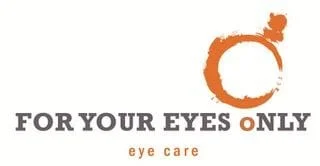
SCHEDULE YOUR FREE CONSULTATION
Myopia - key points.
Myopia is blurry long-distance vision (near-sightedness) so words and objects look unclear on a blackboard, TV or when driving, and in most cases you can see clearly up close (read a book, phone or iPad).
Myopia occurs when the eyeball gets too long causing the light to focus in the wrong place making it impossible to see clearly. On average, one of every three kids has myopia in the USA.
The risk of progression of myopia in kids is worse the younger they are when it first starts. In other words, the younger the kids are at onset the worse it will get. For example, an onset of myopia at 6 years old will result in a higher myopia by age 21 than if the onset was at 9 years old if not controlled.
High myopia increases the risk of developing eye diseases later in life.
Many parents are not aware that their children have myopia until their optometrist identifies it in the annual eye exam.
Wearing regular glasses to correct their myopia and allow them to see clearly at distance does not slow down their vision from worsening year after year.
Childrens growth rate is higher at a younger age and this also affects the speed of eye growth, this means if they have myopia their progression will be faster, which results in a higher risk of developing eye diseases at a later time.
Most young children don't realize that they can’t see clearly at a distance since that is what they are used to.
Myopia control is not limited to young children alone. High school and college students who have progressing myopia also need to control their myopia in order to reduce the risk of future eye diseases developing.
SCHEDULE YOUR FREE CONSULTATION
Myopia is a pandemic
A pandemic is defined as a disease that is rapidly spreading throughout the world. A disease is defined as a condition of the living animal or one of its parts that impairs normal functioning and is typically manifested by distinguishing signs and symptoms such as Myopia.
Myopia in children is an eye disease that is growing in every country in the world. Every parent should be aware of myopia and its risks to their children. Over one-third of the world’s population has myopia, and is predicted to increase to 50% by 2050. So, every other person in the world will suffer from myopia unless we all do something about it, otherwise it will keep on getting even worse than that and the blindness rates will get higher.
Why should I be concerned about myopia?
Our children’s fast growth at a young age affects all parts of their body, including the eyes. This means that myopia progresses at a faster rate in children when they are younger.
EARLY ACTION = LOWER RISKS LATER IN LIFE
The following eye diseases can be linked to myopia, all of which can lead to permanent loss of vision:
Retinal detachment
A vision emergency in which a thin layer of tissue (the retina) at the back of the eye pulls away from the layer of blood vessels that provides it with oxygen and nutrients. This can cause permanent loss of vision or blindness.
Myopic macular degeneration (MMD)
The macula is the central part of the retina and is responsible for creating a sharp, clear image. MMD can occur in a short-sighted patient due to the elongation of the eyeball which stretches the retina and can result in tears in the macula area. It can also cause bleeding beneath the retina.
Having MMD can cause a loss of central vision clarity, such as having a permanent foggy area visible in the center of vision, and can also distort color vision.
Myopic related optic nerve damage (also known as open-angle glaucoma)
The elongation of the eyeball can cause tension on the optic nerve causing damage to the optic nerve structure.
This condition starts with a deterioration in peripheral vision, which often goes unnoticed for a long period of time and advances to blindness.
SCHEDULE YOUR FREE CONSULTATION
Cataracts
Cataracts are cloudy areas that form on the lens of your eye, and prevent clear vision even with glasses or contact lenses.
Studies show that cataracts are 3 times more likely to develop in patients with myopia. This can be treated with surgery and although very prevalent, recovery can be much more difficult on patients with high myopia.
What causes myopia?
Myopia may occur at any age, due to several reasons, some of which we can control, and some we can not: A lot of close work
Children from all ages are spending too much time on screens (social media interaction, gaming, reading, writing or watching programs for pleasure or education), or on books. Some of these are out of our control like when used for school work.
More screen time in childhood = higher chances of developing myopia.
Genetics
0 parents with myopia = about 1 in every 3 children in the USA has myopia
1 parent with myopia = child has X3 chance of developing myopia
2 parents with myopia = child has X6 chance of developing myopia
Asian children have an even higher chance of developing myopia worldwide.
Wearing regular glasses or regular contact lenses
Yes, this is not a mistake. Using regular glasses or contact lenses corrects the vision but it also causes a higher focusing demand up close. This causes the myopia to get worse over time.
Not enough time spent outside
When spending time outside (not using screens or reading books but hiking, riding a bike, swimming, playing ball games etc) the eyes focus most of the time on distance. When kids are not doing this for at least 2 hours per day but instead spend a lot of time doing activities that require near vision, they increase the chances of developing myopia.
SCHEDULE YOUR FREE CONSULTATION
Less than 2 hours a day outside = higher chance of myopia development.
How can I slow myopia progression?
Understanding the causes and symptoms can help to reduce the risk of developing childhood myopia, or slow down its progression.
Identify early signs and symptoms
Any one or more of the following might indicate myopia:
- Squinting when looking at distance like TV
- Complaining of not seeing clearly
- Being asked or asking to move closer to the front of the classroom to see better
- Headaches
- Not performing well in sports
- Being unaware of distant objects
- Blinking excessively
- Rubbing eyes frequently
- Sitting close to the television
- Reading very close to the face
The sooner you identify if your child has myopia the better our chances to control it and slow it down using the treatment options we offer.
Your child may not notice that they have it. It may creep up on them without them noticing.
See your optometrist yearly
A specialist that has experience with children and myopia control can assess your child’s vision yearly, and ensure the health of their eyes.
Take a 2 minute break every 20 minutes

